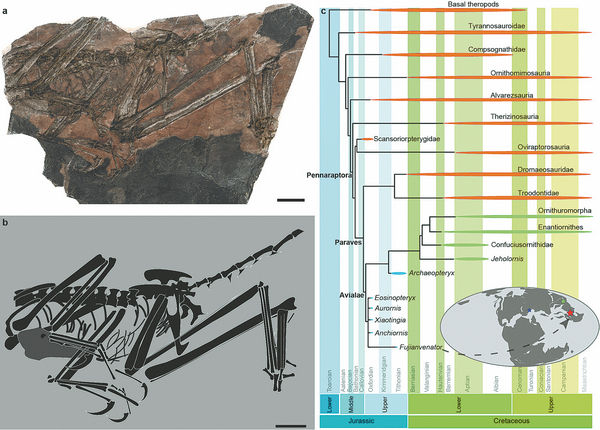A real feather in their caps
By Yang Feiyue | China Daily | Updated: 2023-09-19 07:58

"It's like we have taken parts of the bones from different dinosaurs closely related to birds or avialans and then mixed them together to create a new animal," Wang says.
Its hind limbs are even more remarkable. In all non-avialan theropod dinosaurs, the thigh is longer than the shin, while in avialans, although the shin gradually became elongated, the degree of elongation was limited.
However, in the case of the Fujian fossil, the shin is twice as long as the thigh, a feature otherwise unknown among Mesozoic dinosaurs and birds.
In previous research, paleontologists believed that the key factor in the evolution from dinosaurs to birds was adaptation to tree-dwelling life. The shift meant that lower legs could not be too elongated, otherwise the bird would be unable to maintain its balance in the branches.
Fujianvenator's morphology indicates that it was likely a small theropod dinosaur that was an adept runner, or which lived near water.
"This lifestyle is completely different to the understanding in our community of ecological habits during the early evolution of birds," Wang emphasizes, adding that the discovery adds to the ecological diversity of primitive avialans.
Although Fujianvenator is eye-catching, scientists have found a great number of well-preserved animal fossils from the same part of Zhenghe.
"In addition to Fujianvenator, we have found an abundance of other vertebrates, including teleosts, testudines and choristoderes," says Xu Liming who is from the FIGS and who was lead author of the study.
During the Late Jurassic-Early Cretaceous period, the area that is now southeastern China experienced intensive tectonic activity resulting from the subduction of the Paleo-Pacific plate, which created widespread magmatism and coeval fault-depression basins where the Fujianvenator was found, Xu explains.
This geological background is essentially the same as during the Late Jurassic in north and northeastern China, where the older Yanliao Biota is preserved, Xu adds.
























